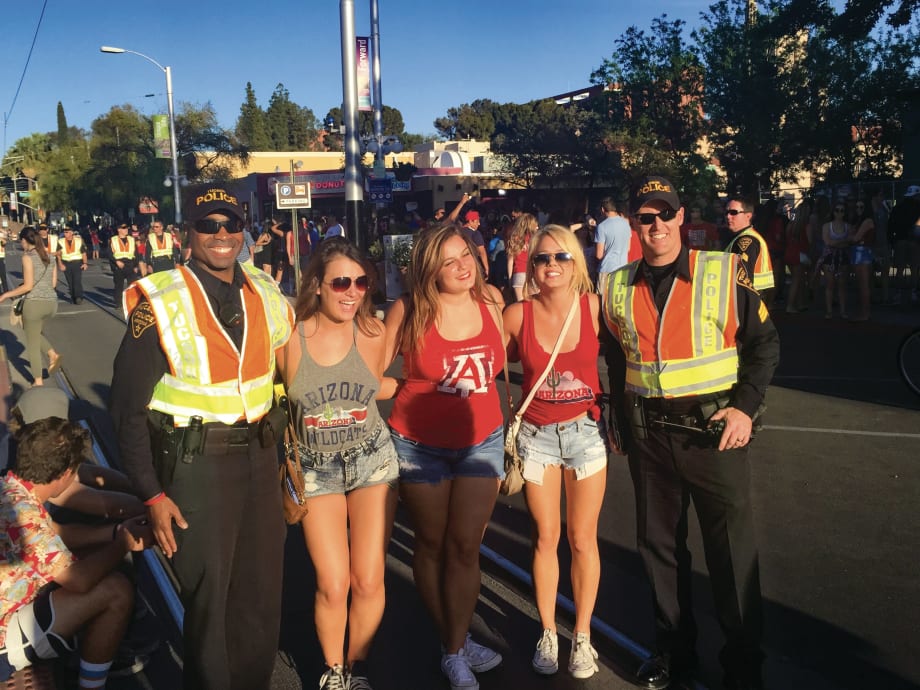"Clearly, post-Ferguson, there has been an emphasis in many cities on improving crowd management practices," she says. "Crisis gives us an opportunity to ask ourselves if we should be doing something differently, and a lot of departments have been asking that more recently.
"Over the years, we've learned a lot in psychology, sociology, and criminal justice about human behavior and how to best manage and de-escalate situations," she adds. "If Tucson Police Department is doing this not in the wake of a crisis, but in order to prevent one, they're far ahead of the curve."
Tucson PD readily admits that its change in philosophy from old-school riot control to modern crowd management didn't develop in a vacuum. The department has looked to other law enforcement agencies—including those in the United Kingdom, Ireland, Germany and Belgium—for best practices, as well as "lessons learned." In years when the Arizona Wildcats didn't reach NCAA tournament play, Tucson PD officers have been sent to U.S. cities whose teams had advanced, to see firsthand how local authorities managed their own crowds.
Some ideas brought back include encouraging more direct, casual conversation with participants during events. Officers pose for photos with fans, offer up bottles of water during outdoor events, and occasionally hand out swag. Before one University of Arizona game, they distributed thousands of colorful rubber bracelets that referenced a UA sports slogan: "Tucson Police Bear Down with Pride."
Borrowing on a European model, the department worked to establish Community Network Teams – groups of specially trained officers who automatically deploy to large gatherings, and work before, during and after to establish a dialog with participants. Sometimes protesters will assist CNT officers by pointing out troublesome or unwanted persons so they can be cautioned, moved along or arrested, if need be.













